SCCER-SoE has issued the third newsletter

© 2016 EPFL
The proposal for the second phase of the SCCER-SoE is submitted, now the next steps are awaiting. In this third internal newsletter, you can learn more about the upcoming procedure and the biggest changes in our proposal. In addition, we give you a short insight on the successful first SCCER-SoE PhD Day and the planned blog. Last but definitely not least, we are very happy to present you various news of several groups associated with the SCCER-SoE.
Phase 2 proposal
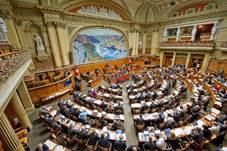
The SCCER-SoE recently submitted its proposal for the second phase lasting from 2017 to 2020. The next steps will be the following:
- In June Domenico Giardini and François Avellan will have a hearing with the Commission for Technology and Innovation (CTI) to get a first feedback and discuss controversial points.
- Later in the summer, the Swiss Parliament will start its discussions about the ERI Dispatch for 2017 to 2020 (Botschaft zur Förderung von Bildung, Forschung und Innovation BFI). If everything works out fine, the National Council and the Council of States should agree on a final version at the end of the autumn session in September.
- In the following, assuming a positive parliamentary decision, the SCCER-SoE will negotiate the contract details with CTI.
The two biggest changes in the SCCER-SoE’s proposal in comparison with the first phase are the following:
- In addition to the current academic and industrial partners, the SCCER-SoE will establish new collaborations with four partners in the area of hydropower and one in the area of geo-energy.
- Particular emphasis will be placed on demonstration and pilot plants.
PhD day – challengers meet leaders
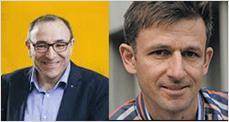
In mid-April, 18 PhDs participated at the first SCCER-SoE PhD day in Bern.
The morning was dedicated to plan the upcoming PhD school in October in Leukerbad. In a vivid discussion they gave valuable feedback to Ueli Wieland and Pedro Manso about its structure and program. Some decisions:
- In order to expand their network, a group of PhDs will organize a more interactive ice-breaker where people with different backgrounds have to jointly solve several tasks.
- The PhDs would appreciate a case study in the middle of the week including excursions focusing on regional topics.
- The majority of the PhDs wish to get a better “big picture” about climate change, Swiss measures to foster energy efficiency and reduce CO2 emissions, consequences after the COP 21 declaration of Paris, and energy storage concepts to stimulate electricity demand at noon etc.
In the afternoon, our PhDs had the chance to challenge Philipp Dietrich from H2 Energy (formerly Axpo) and Andres Fankhauser from KWO, which provided meaningful insights on current and future challenges in Swiss energy supply and replied the PhDs questions. A short summary of their main talking points:
- H2 Energy is a two years old start-up dedicated to develop, implement and operate tailor-made hydrogen solutions and link science and industry. Thanks to a partnership with Coop, H2 Energy will coordinate the realisation of the first network of public accessible hydrogen filling stations and promote the availability of corresponding trucks and passenger cars.
- KWO has many ideas on how to increase the electricity production of its hydropower plants. At the moment, they are facing four big challenges: Low electricity price, KEV which is not applicable for large hydropower plants, environment protection, and federalism (water crossing different cantons with different targets). KWO is expecting support to master these challenges by means of the new electricity law currently in discussion in the parliament.
Blog

The well-known saying “do good things and talk about it” is also true for our SCCER-SoE. It’s crucial to share our results with the community and general public because in the end the Swiss Parliament decides about the future of the SCCERs based on the population’s opinion.
Therefore, the ExeCom decided to create a blog on our website in order to present comprehensive insights into our research. The plan is to launch the SCCER-SoE blog in May with a first post by Domenico Giardini about the future of geothermal energy in Switzerland. Every month, there will be a new author and topic. Ueli Wieland and Anja Tamburini will or have already contacted some of you. Feel free to get in touch with them if you have an idea and want to contribute to the blog.
News of Marco Herwegh’s group (University of Bern)
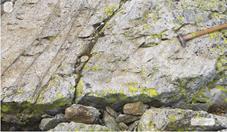
The results of the MSc thesis of Thomas Belgrano were just published in the Swiss Journal of Geosciences: Inherited structural controls on fault geometry, architecture and hydrothermal activity: an example from Grimsel Pass, Switzerland. A special highlight is the discovery of spatially rather restricted 1D flow paths in such hydrothermally active fault systems like the Grimsel Breccia fault.
News of Bernhard Elsener’s group (Institute for Building Materials, ETHZ)
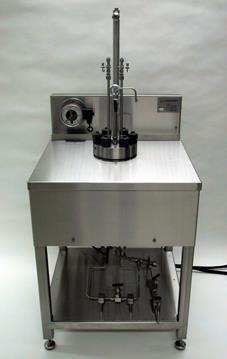
Long-term operation of geothermal plants require durable materials without excessively high costs. These materials are exposed to geothermal brines that can be very aggressive. Therefore, corrosion of the casings, heat exchangers or other component of the geothermal plant becomes a critical issue. The investigation of the corrosion process at high temperatures (up to 160 °C) and pressures is demanding both from the experimental and interpretation part.
To perform such experiments, the group of Corrosion and Durability at ETH Zurich recently purchased a high-temperature/high-pressure autoclave. It will be used to characterize the corrosion behaviour of carbon and stainless steels and to develop inexpensive corrosion-resistant materials that exhibit excellent performance in geothermal environments.
Two types of experiments will be performed.
- In the initial short-term tests, electrochemical techniques will be applied to monitor the corrosion state of metallic materials and to evaluate the mechanisms of corrosion. These tests induce the natural corrosion process that usually occurs spontaneously.
- Later, selective exposure tests will be conducted to reach equilibrium conditions of the reactions at the metal-electrolyte interface and thus, assess the corrosion rate by means of weight loss measurements.
News of Lyesse Laloui’s group (Laboratory of Soil Mechanics, EPFL)
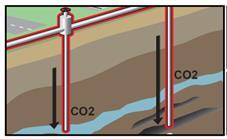
The Laboratory of Soil Mechanics (LMS) – Chair “Gaz Naturel” at EPFL participates in the SCCER-SoE’s task 1.2 “Reservoir modeling and validation”. For the last three years, LMS staff and in particular Dr. Roman Makhnenko has built modern experimental facilities, in which the conditions for geological storage (high pressure and high temperature) can be reproduced down to three kilometres depths. Representatives of host and cap rock are studied in terms of geomechanical and petrophysical properties evolution during interaction with CO2. Carbon storage involves coupled thermo-hydro-chemo-mechanical (THMC) interactions that are being investigated at LMS with the focus on understanding each effect separately in order to be able to identify the coupled effects. Alterations of geomechanical properties (stiffness and strength) and permeability caused by CO2 injection are measured in oedometric and convential triaxial cells. Obtained experimental results for materials prior and after CO2 injection are analyzed in the framework of multiphysical models that describe the observed changes in the geomechanical response and permeability.
Additionally, the LMS group is co-organizing the International Conference on Greenhouse Gas Control Technologies (GHGT-13) that will take place on 14-18 November 2016 at the SwissTech Convention Center in Lausanne. More than 1’000 abstracts have already been received from 39 countries and are covering a wide range of topics from carbon capture, transportation, and storage to the ways to reduce emissions and public perception.
News of Robert Boes’ group (Laboratory of Hydraulics, Hydrology and Glaciology, ETHZ)

The VAW organizes a public seminar and several workshops taking place soon:
- 24.5.2016: Public seminar “Potential von ADCP Messtechnik zur Erhöhung der Genauigkeit von numerischen Modellen im Flussbau” at ETHZ
- 22.6.2016: Workshop “Schwemmholz an Hochwasserentlastungsanlagen von Talsperren / Bois flottant et évacuateurs de crues des barrages” at ETHZ
- 6.7.2016: Workshop “Dealing with hydro-abrasive erosion at high-head HPPs” at the IAHR Symposium on Hydraulic Machinery and Systems in Grenoble
You can find various reports of the VAW on its website and a selection of three state of the art reports on the SCCER-SoE website (about sediment bypass tunnels, hydro-abrasive erosion, and safe downstream fish migration).
If you want to be regularly updated on the VAW’s activities, register for its newsletter by writing an email to Cornelia Auer.
Save the dates
12.-13.9.2016
SCCER-SoE Annual Conference 2016 in Sion
18.-21.10.2016
SCCER-SoE / NRP 70 PhD School 2016 in Leukerbad
More events on the SCCER-SoE website
Next internal newsletter

The next internal SCCER-SoE newsletter will be released in August, 2016.
If you want to share news with your SCCER-SoE colleagues, please send your inputs to Ueli Wieland and / or Anja Tamburini.
Until then, we wish you a bright and happy spring!